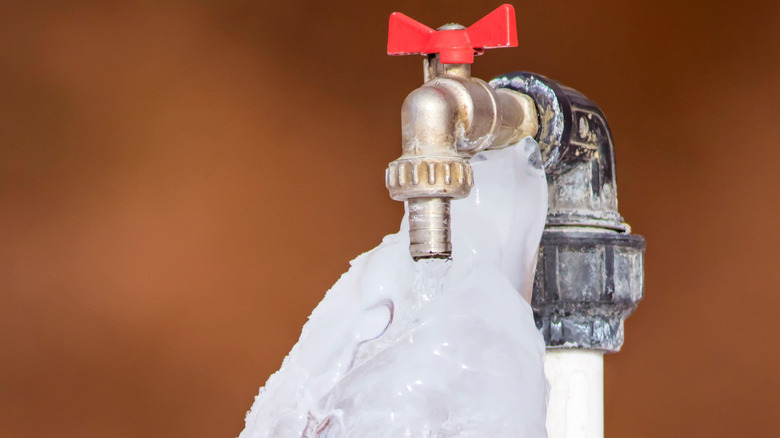Preventing Frozen Pipes in Winter: Professional Advice
Preventing Frozen Pipes in Winter: Professional Advice
Blog Article
Have you been trying to locate resources involving How to prepare your home plumbing for winter weather?

Winter can wreak havoc on your pipes, specifically by freezing pipes. Right here's just how to stop it from taking place and what to do if it does.
Introduction
As temperatures decrease, the danger of icy pipelines boosts, potentially causing expensive repair services and water damages. Comprehending exactly how to avoid frozen pipes is essential for home owners in chilly climates.
Prevention Tips
Insulating vulnerable pipelines
Cover pipes in insulation sleeves or use warmth tape to secure them from freezing temperatures. Focus on pipes in unheated or external areas of the home.
Home heating techniques
Maintain indoor areas adequately heated, especially locations with pipes. Open up cupboard doors to permit warm air to flow around pipelines under sinks.
How to identify frozen pipelines
Search for reduced water flow from taps, unusual odors or noises from pipelines, and visible frost on subjected pipes.
Long-Term Solutions
Architectural modifications
Consider rerouting pipelines far from outside wall surfaces or unheated locations. Add additional insulation to attic rooms, basements, and crawl spaces.
Upgrading insulation
Invest in high-quality insulation for pipes, attic rooms, and wall surfaces. Correct insulation helps maintain constant temperature levels and lowers the risk of frozen pipes.
Shielding Exterior Plumbing
Yard hose pipes and exterior taps
Separate and drain pipes garden tubes prior to winter season. Mount frost-proof spigots or cover outside faucets with shielded caps.
Understanding Icy Pipes
What causes pipes to freeze?
Pipelines ice up when subjected to temperature levels listed below 32 ° F (0 ° C) for prolonged periods. As water inside the pipes ices up, it expands, putting pressure on the pipe wall surfaces and potentially causing them to break.
Dangers and problems
Frozen pipes can bring about water system disruptions, home damage, and pricey repair services. Burst pipelines can flooding homes and cause considerable structural damages.
Indications of Frozen Pipeline
Recognizing frozen pipelines early can prevent them from rupturing.
What to Do If Your Pipes Freeze
Immediate activities to take
If you believe icy pipes, keep faucets open up to ease pressure as the ice thaws. Make use of a hairdryer or towels taken in hot water to thaw pipelines slowly.
Verdict
Avoiding icy pipelines requires aggressive measures and fast feedbacks. By comprehending the reasons, signs, and preventive measures, home owners can safeguard their plumbing throughout cold weather.
5 Ways to Prevent Frozen Pipes
Drain Outdoor Faucets and Disconnect Hoses
First, close the shut-off valve that controls the flow of water in the pipe to your outdoor faucet. Then, head outside to disconnect and drain your hose and open the outdoor faucet to allow the water to completely drain out of the line. Turn off the faucet when done. Finally, head back to the shut-off valve and drain the remaining water inside the pipe into a bucket or container. Additionally, if you have a home irrigation system, you should consider hiring an expert to clear the system of water each year.
Insulate Pipes
One of the best and most cost-effective methods for preventing frozen water pipes is to wrap your pipes with insulation. This is especially important for areas in your home that aren’t exposed to heat, such as an attic. We suggest using foam sleeves, which can typically be found at your local hardware store.
Keep Heat Running at 65
Your pipes are located inside your walls, and the temperature there is much colder than the rest of the house. To prevent your pipes from freezing, The Insurance Information Institute suggests that you keep your home heated to at least 65 degrees, even when traveling. You may want to invest in smart devices that can keep an eye on the temperature in your home while you’re away.
Leave Water Dripping
Moving water — even a small trickle — can prevent ice from forming inside your pipes. When freezing temps are imminent, start a drip of water from all faucets that serve exposed pipes. Leaving a few faucets running will also help relieve pressure inside the pipes and help prevent a rupture if the water inside freezes.
Open Cupboard Doors
Warm your kitchen and bathroom pipes by opening cupboards and vanities. You should also leave your interior doors ajar to help warm air circulate evenly throughout your home.

I found that piece about 6 Ways to Prevent Frozen Pipes when doing a lookup on the web. Enjoyed reading our entry? Please share it. Let somebody else locate it. We value your readership.
Book Service Report this page